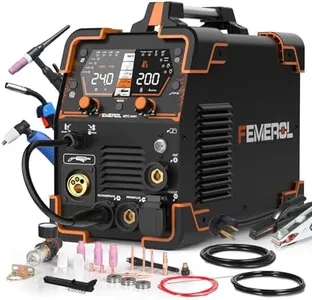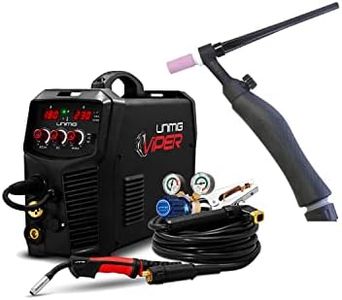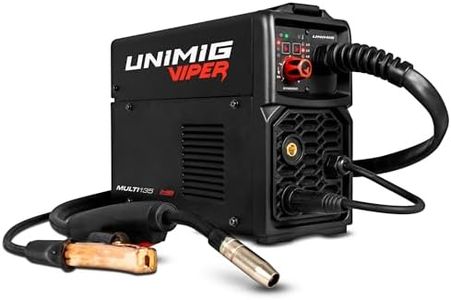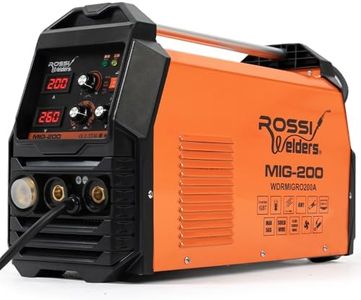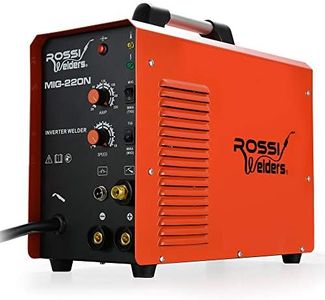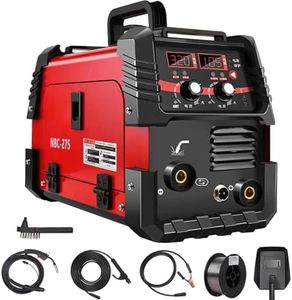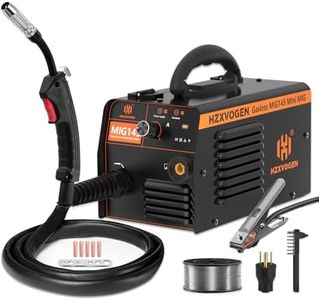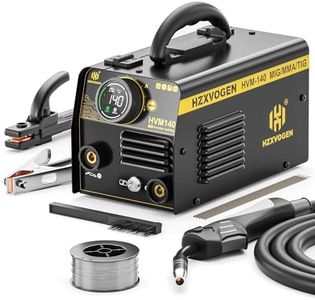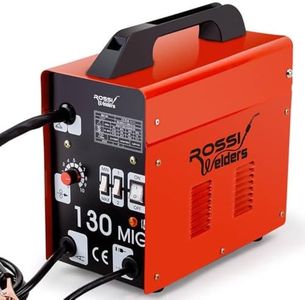We Use CookiesWe use cookies to enhance the security, performance,
functionality and for analytical and promotional activities. By continuing to browse this site you
are agreeing to our privacy policy
9 Best Mig Welder For Beginners
From leading brands and best sellers available on the web.Buying Guide for the Best Mig Welder For Beginners
Choosing a MIG welder as a beginner can feel overwhelming, but with a little understanding, you can find one that’s safe, easy to use, and fits your projects well. It's important to look for user-friendly features and match the machine’s capabilities to the work you plan to do. Focus less on the biggest numbers or flashiest extras, and more on whether the machine will handle your projects comfortably, help you learn confidently, and offer a smooth, enjoyable introduction to welding.Amperage RangeAmperage range refers to the minimum and maximum welding power (current) the MIG welder can deliver, which determines the thickness of metal you can weld. Low-range welders (30-120 amps) are suitable for light jobs like auto body work or thin sheet metal, while medium-range (120-180 amps) models can tackle general-purpose tasks and medium-thick materials. High-range welders (180 amps and above) are for thicker metals and heavier-duty work. If you're just starting, think about the typical thickness of the metal you anticipate working with—most beginners benefit from a model in the low-to-medium range to balance easy handling with enough power for future learning.
Input VoltageInput voltage is the type of power source the welder needs, typically either 110-120V (standard household outlets) or 220-240V (more powerful, usually in garages or workshops). Models that use 110-120V are beginner friendly and plug into regular home outlets, making them convenient for small hobby projects. 220-240V machines can weld thicker materials but may require special wiring at home. Some machines are dual-voltage, offering flexibility if you might take on bigger projects or upgrade your workspace. For beginners, 110-120V is usually sufficient and simplest to set up.
Wire Feed Speed ControlWire feed speed control lets you adjust how fast the wire electrode feeds into your weld. This affects how the weld is formed—too fast and your welds get messy, too slow and you won't get proper penetration. Machines with simple, clearly marked controls are best for beginners, while more advanced options may feature digital gauges or automatic settings. Choose a welder with easily adjustable, reliable wire feed speed controls so you can experiment and learn at your own pace.
Duty CycleThe duty cycle explains how long a welder can operate within a ten-minute window before it needs to cool down, typically shown as a percentage at a certain amperage. For example, a 20% duty cycle at 90 amps means you can weld for 2 minutes, then must wait 8 minutes. Lower duty cycles (10-20%) are common in beginner models and are fine for short, hobby sessions. Higher duty cycles let you weld longer before stopping, which matters if you plan on longer projects. Beginners rarely bump into duty cycle limits, but knowing it helps set the right expectations.
Ease of Use FeaturesEase of use features include things like automatic settings, clear labeling, simple wire loading, and good instructions. Some machines have beginner modes or preset options that adjust the welder for you. Look for features that make setup and operation simple, allowing you to focus on learning technique, rather than getting lost in adjustments. For a beginner, a straightforward control panel and helpful manual can make a huge difference.
Portability and SizePortability and size reflect how easy it is to move and store the welder. Smaller, lightweight models are perfect for beginners who may not have a permanent workshop, as you can easily take them where needed or store them away. Heavier, bulkier units are more stable for big jobs, but can be overkill for basic use. As a beginner, prioritize a compact, light model that won’t be a hassle to transport or tuck away after use.
Shielding Gas CompatibilitySome welders use shielding gas to protect the weld from air, while others are 'flux-core only' and create their own shielding. MIG welders that can use both (known as dual capability) offer more flexibility: gas shielding gives neater welds, while flux core is cheaper and better outdoors. Beginners who want to learn both methods should look for a model that allows for gas hookups and also works with flux-core wire. If you want simplicity and less setup, flux-core only is perfectly fine for learning.
